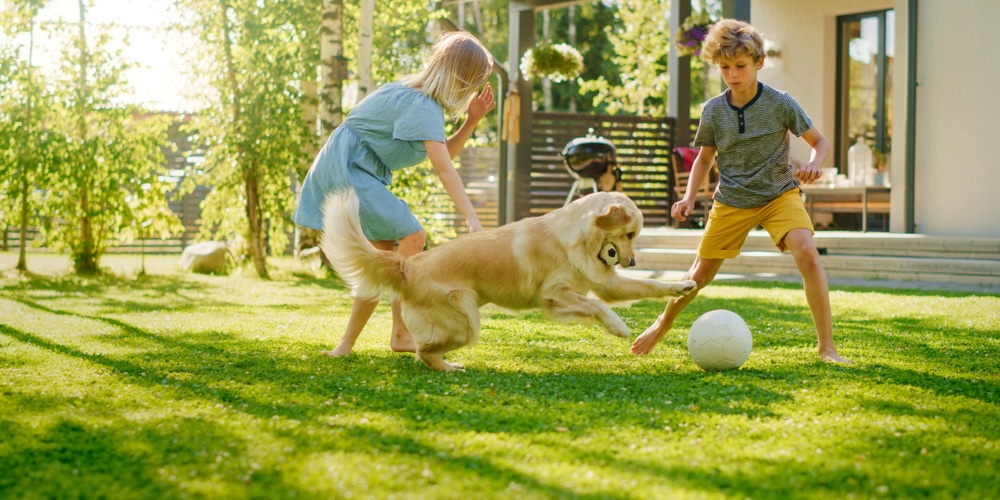Healthy soil, adequate water, and lots of sunlight are all you require to have a beautiful green lawn, right? Not necessarily. While some grasses tend to wither in the shade, others hate direct sunlight; and that’s good news for homeowners with barren shady patches in their yards. So if you’re in Georgia and looking for grass that will grow in full shade, here are your 3 best bets and the right time to plant them.
Grass for Full Shade in Georgia: Best Shade Tolerant Grass

Before deciding on the type of grass to plant, you need to determine the kind of shade you have on your lawn. That will guide you in choosing the right species of lawn grass to grow. Here are the three main types of shades:
Type 1: Dappled Shade
This type of shade is formed when sunlight filters through the leaves of trees. The ground beneath such trees is never in complete darkness or full sunlight.
Type 2: Partial Shade
Partial shade is when your lawn is mostly in the shade for the better part of the day, but it still gets direct sunlight.
Type 3: Full Shade
Full shade is when your lawn is in the shade all day long with very little direct sunlight.
The best full shade grasses to grow
#1. St. Augustine Grass
This is a popular choice for lawns in the southeastern United States, and it thrives in hot and humid climates. It’s a low-maintenance grass that can tolerate both dappled and full shade, with the most shade-tolerant varieties being CitraBlue and Palmetto. These two can grow in areas that receive as little as 4 hours of sunlight daily.
St. Augustine grass is a fast-growing grass that spreads by sending out aboveground runners or stolons. These stolons help it to spread and fill in any bald spots quickly. It also has a deep root system that allows it to survive long periods of drought.
While St. Augustine grass is a great choice for full shade, it’s susceptible to several diseases, including brown patch and Rhizoctonia blight.
When to Plant St. Augustine Grass:
St. Augustine grass is a warm-season grass, so it’s best to plant it in the spring or summer when the temperatures are 80-100 degrees Fahrenheit. Plant St. Augustine grass plugs or sod 4-6 weeks after the last frost date to give the grass plenty of time to establish.
#2. Zoysia Grass
Zoysia is one of the most beautiful shade-tolerant grasses you can plant on your lawn. It has a fine texture, soft feel, a deep green color, and it’s very dense.
It’s a warm-season grass like St. Augustine, so it’s best to plant it when the weather is warm. It’s slow-growing grass, meaning it could take up to two years to fill in your lawn completely. Zoysia’s slow growth is because it produces very few aboveground runners or stolons and instead spreads by sending out underground rhizomes.
While this grass is very shade tolerant, it’s not as drought resistant as St. Augustine grass. It will go dormant during periods of drought and turn brown. However, it will green up again when the weather is right or watered.
Zoysia grass is also susceptible to several diseases, such as brown patch, root rot, and dollar spot.
When to Plant Zoysia Grass:
The best times to plant zoysia grass are in late spring to early summer, when the temperatures are above 55 degrees Fahrenheit. You can also plant Zoysia in the early fall, but ensure to plant 60 days before the first fall frost.
#3. Fescue
Fescue is another great choice for shady lawns. It’s a cool-season grass, meaning it does best in cooler climates where the temperatures don’t get too hot. It’s also very drought tolerant and can go for long periods without water and still look green.
However, it’s worth noting that even though fescue grass is tolerant of shade, it’s not as hard as St. Augustine or Zoysia. It still prefers at least four to six hours of filtered or dappled sunlight for optimum growth and coverage.
There are several types of fescue grass, but the two most shade-tolerant varieties are Chewings fescue and red fescue.
When to Plant Fescue Grass:
Fescue grass is a cool-season grass, so it’s best to plant in the fall or spring. The ideal time to plant fescue grass is September to mid-October in the northern states and February to early March in the southern states.